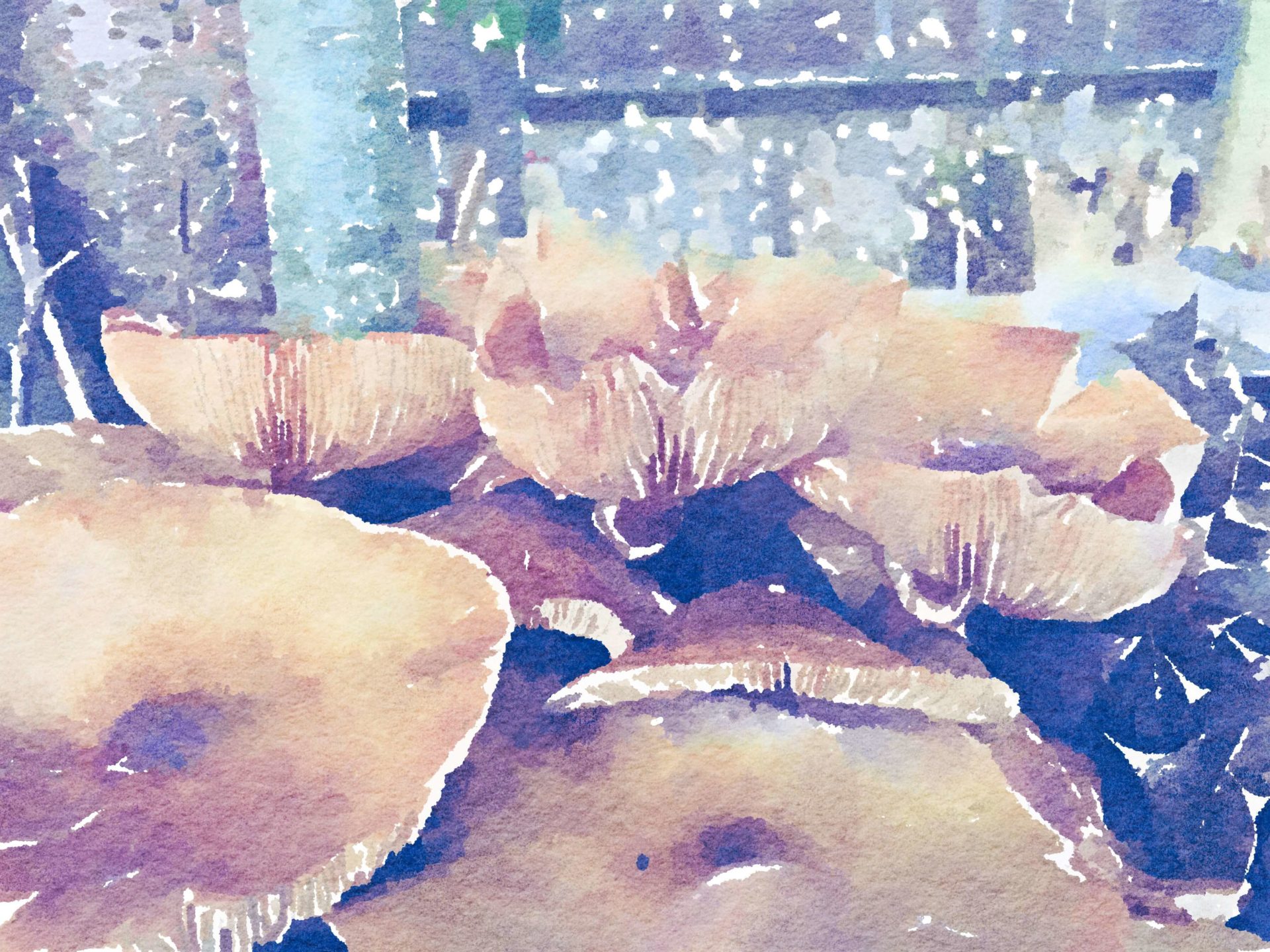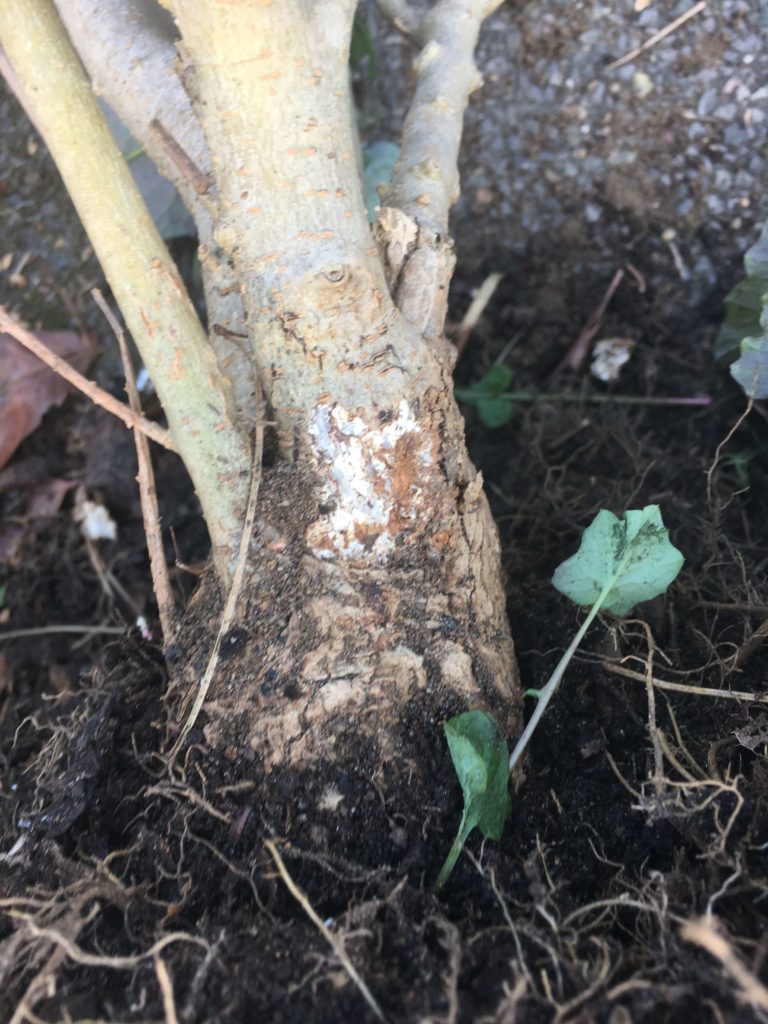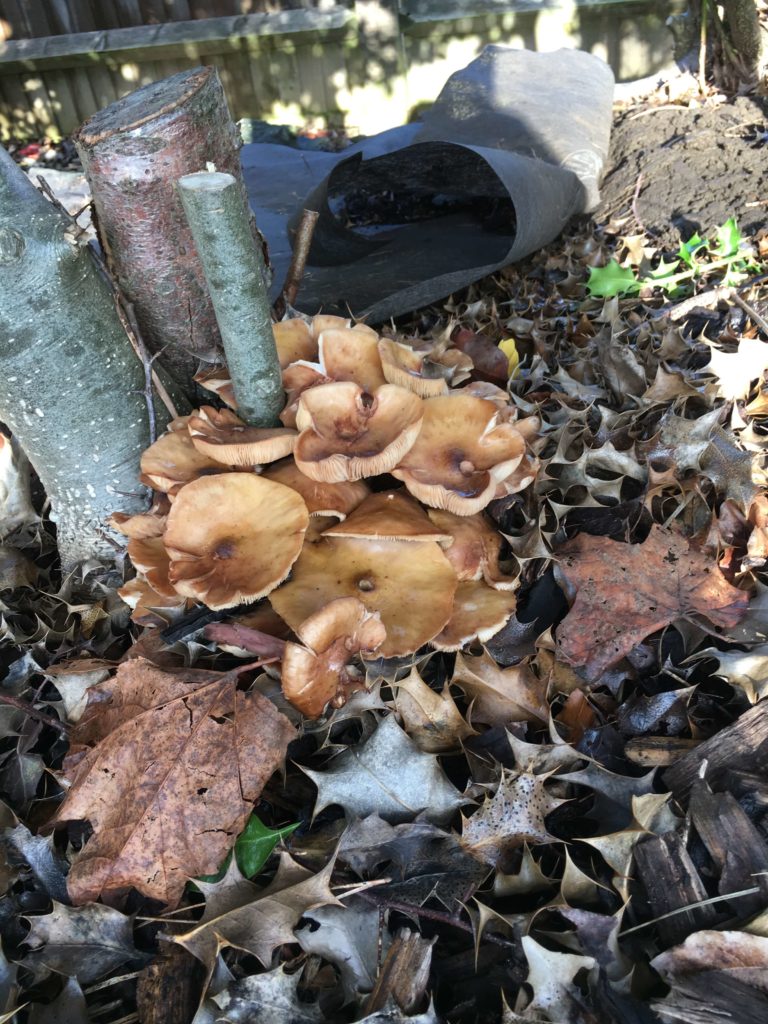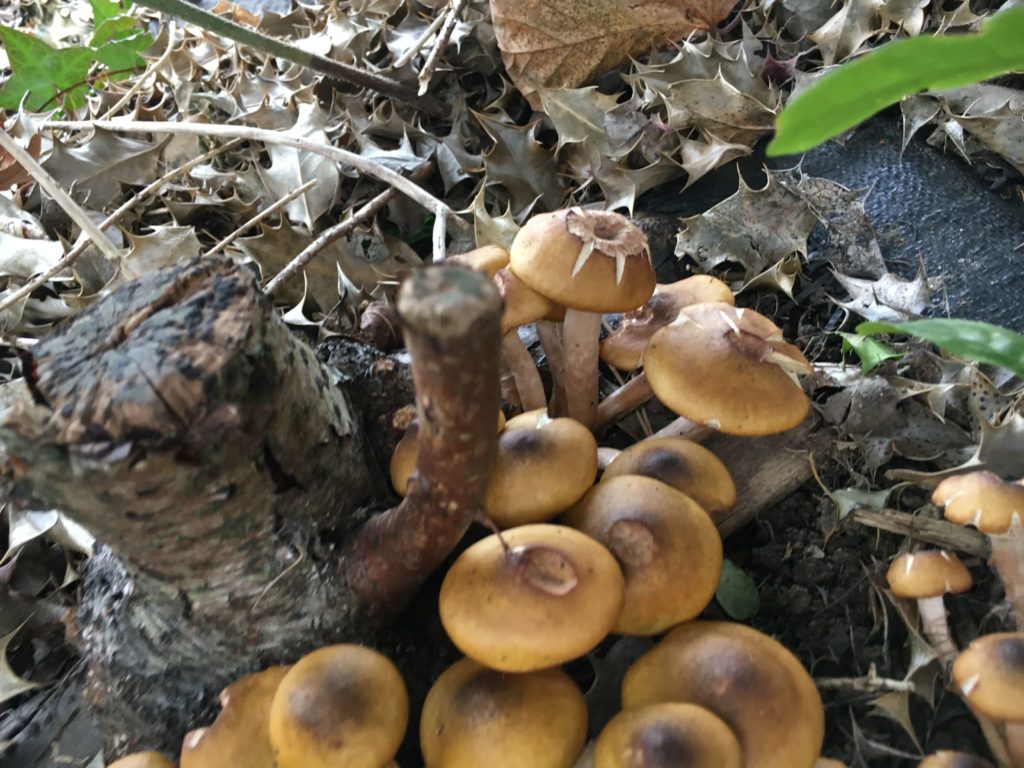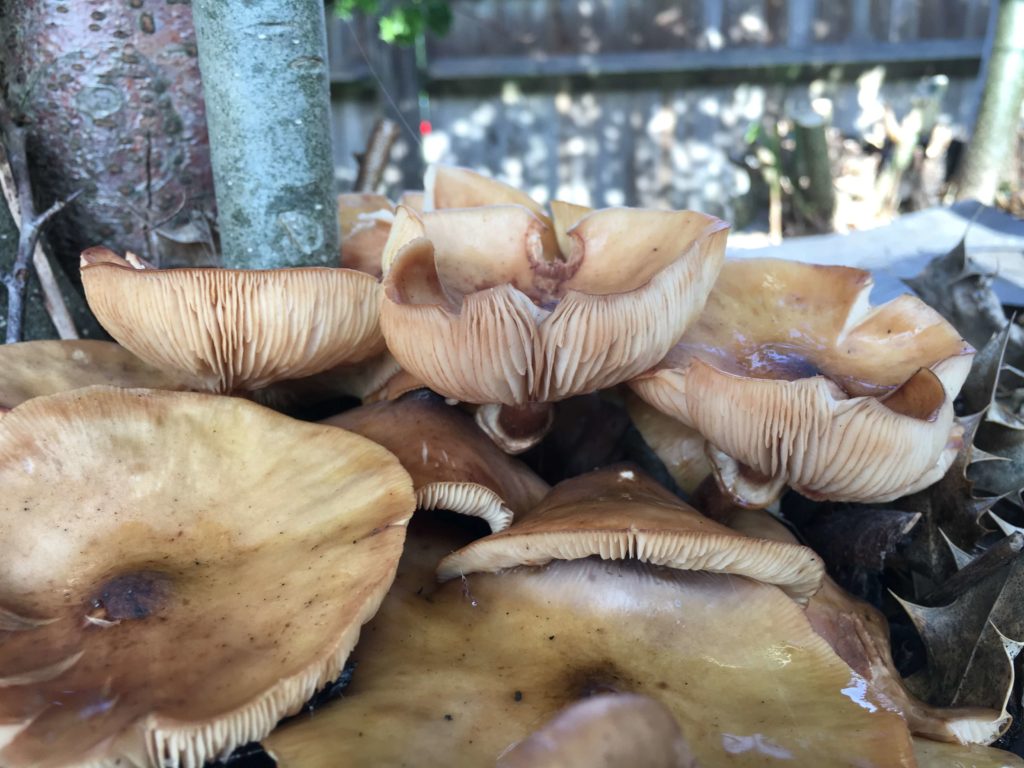It’s perfect weather for those bonkers Autumn mushrooms to poke their way out of the damp, warm soil. On the whole they’re just Fun Guys, but a few are portends of slightly sinister things happening in your garden that probably need your attention.
This month I’m looking out for Honey Fungus (Armillaria).
Signs you may have it:
- A cluster of lovely golden mushrooms with a “collar” on their “necks” appearing in Autumn, usually at or near the base of a tree or stump
- A layer of white between the bark and the soft stem underneath
- “Bootlaces” in the surrounding soil that look a bit like strands of liquorice. Yip, that’s the fungus spreading across your garden [Insert sinister music]
- “Come to think of it, several shrubs/trees died mysteriously in that area over the last few years…”
Good to know:
- Honey Fungus is brilliant at returning the nutrients in dead wood to the soil and is a really important part of the natural cycle.
- Not all species feed on live plants, but several do. And they tend to target all the plants we adore: Cherries, Rhododendrons, Beech, Privet, Birch, Holly, Magnolias, Acers etc etc.
- If someone offers you a ‘chemical solution’ using a fungicide, dubiously licensed as a patio cleaner, don’t. Just don’t.
What to do:
- Stop it spreading further by having recently-dead trees professionally removed and the stumps ground out – this removes the food source that allows the hyphae to spread
- Keep your plants in the surrounding area happy and healthy – they’ll be less susceptible
- Change your planting design (and mindset) to incorporate plants that are less vulnerable. The list is not long, but there are some fantastic plants you may not have considered before.
For sound advice on Honey Fungus the RHS is your first port of call: CLICK HERE FOR INFO and RHS members can call the helpline for advice.
